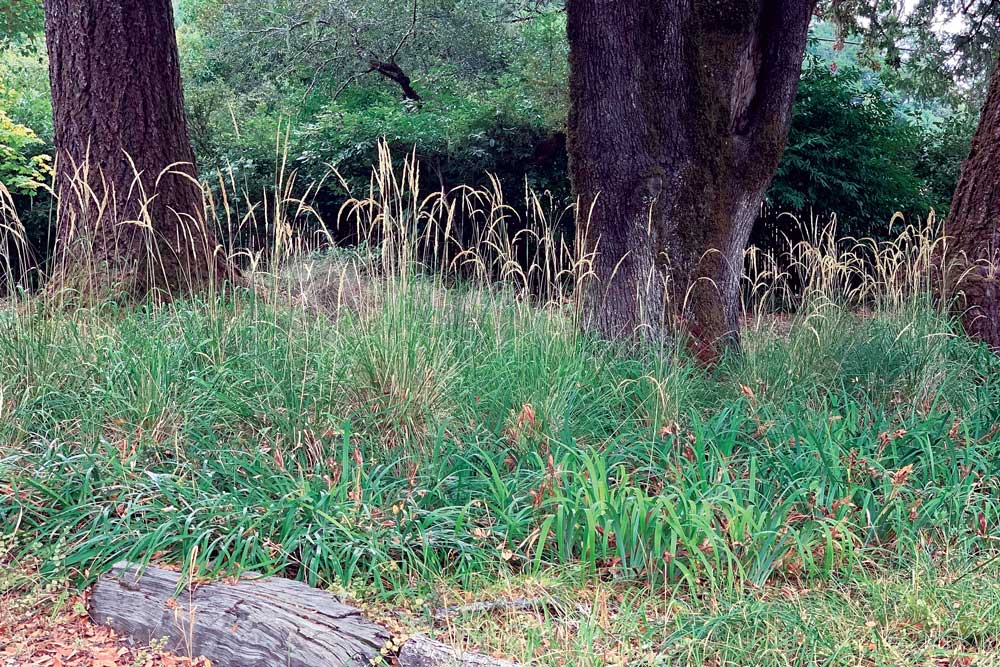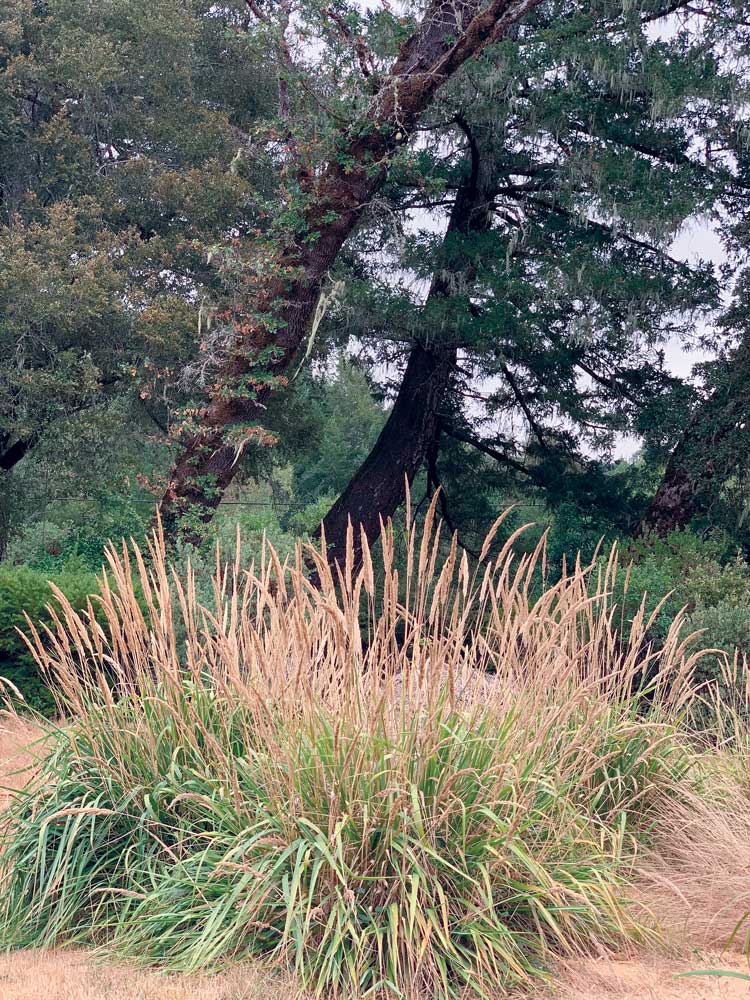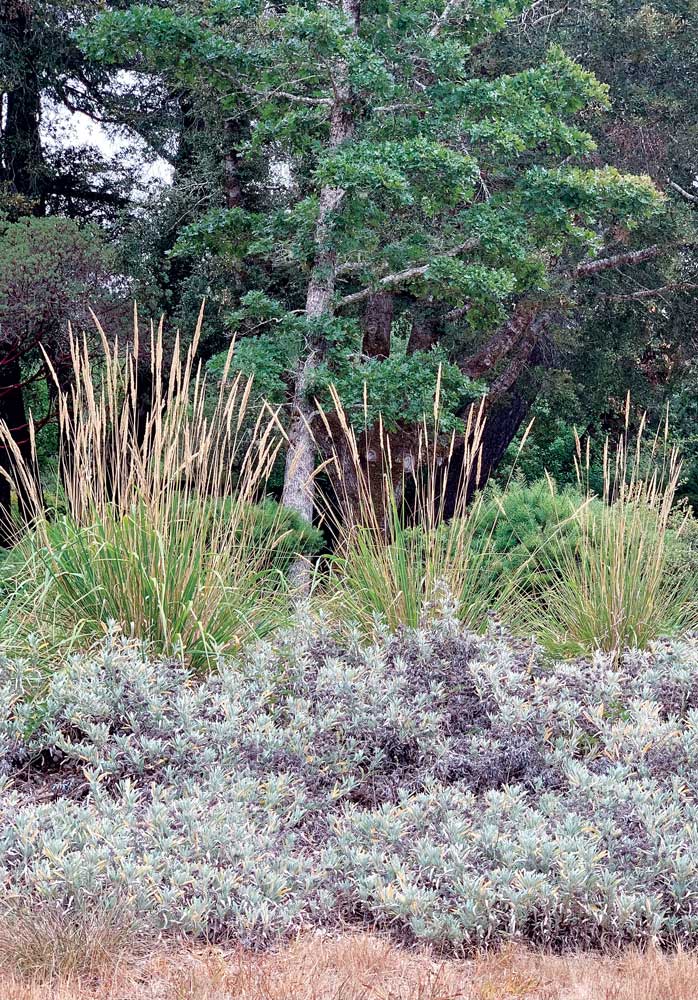Plant Notes
Pacific Reedgrass in the Garden

Calamagrostis nutkaensis
This article was adapted from an article written by Cheryl Lisin for the journal Grasslands, Vol. 33, No. 1, Winter 2023
Pacific reedgrass is a large, showy perennial bunchgrass that ranges from Alaska to Central California, where it grows along the coast as well as in the mountains of the Coast Range. It is an attractive, low-maintenance, drought-tolerant evergreen grass for your landscape and is host to butterflies and moths. It also provides habitat for lizards, salamanders, and small mammals.
My first experience with growing Pacific reedgrass was 15 years ago when I purchased 60 plugs from the California Native Plant Society, North Coast Chapter. They were grown from seed collected in Redwoods National Park. Back then the Chapter didn’t have a nursery—the plugs were sitting around someone’s backyard, getting rootbound, so I got a good deal on them!

My garden is four miles from the Pacific Ocean as the crow flies, but there is a mountain range in between, and summers here are hot and dry. I figured I’d better plant my new Pacific reedgrass plugs in the shade and chose a spot beneath a big canyon live oak, Quercus chrysolepus, which is mostly dappled shade. I planted them during the rain in early November and have never watered them since. They rooted right in and have looked fabulous all these years. Every once in a while I’ll de-thatch them with a rake, but have never had to cut them back to rejuvenate them.
Several years later, I bought a cultivar of Pacific reedgrass called ‘The King’, collected by Roger Raiche in the King Range, right next to where I live. It has wider blades and is a little larger and more robust than the straight species. I decided to try growing it in full sun and planted it on my leachfield, thinking it would appreciate the water. Being a thrifty person, I divided that plant up and planted several divisions of it. It has thrived on the leachfield ever since, reaching 3 feet all around (taller when blooming) in a short while. Every 3 or 4 years it starts to look a little thatchy and its vigor declines, so in early winter I chop it back almost to the ground. I use hedge shears for this (which work great), but I have learned to shake the plant and make a ruckus before chopping, in an attempt to scare any critters away; I once chopped a salamander in half, which was a pretty horrible thing to do.

It is easy to make divisions of Pacific reedgrass, and I had several of these in pots, so I decided to try planting them in full sun with no supplemental water. These have surprised me with how great they look year round, staying green and lush-looking even without water.
The one regular maintenance task I do on all my Pacific reedgrass is to cut the flower stalks off when they start to look untidy, usually in winter. Whether you have sun, shade, water, no water, Pacific reedgrass is easy to grow and a great addition to any Northern California landscape.


